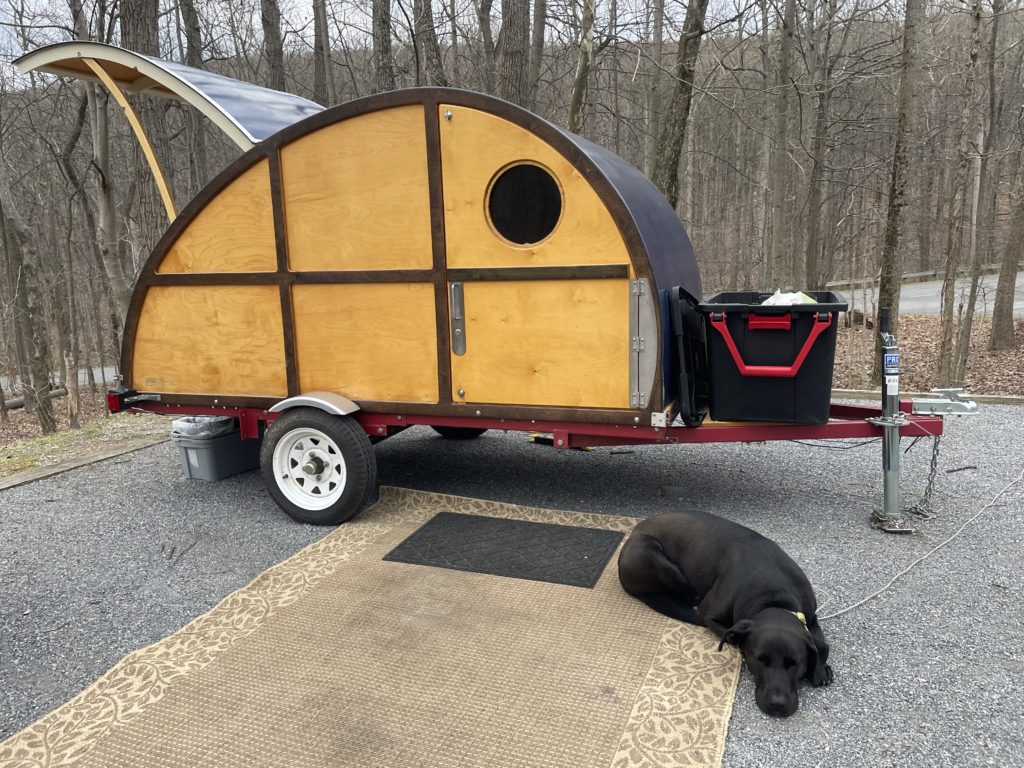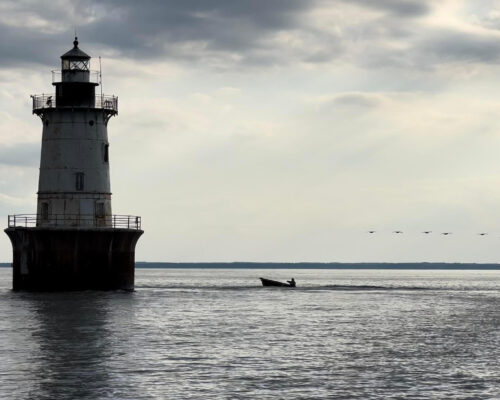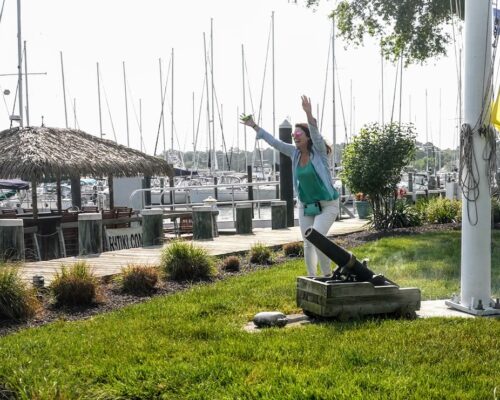You’ve probably made that same week-long cruise around the Bay that everybody has. Here in Maryland, it’s Annapolis to Rock Hall to St. Michaels to Oxford to Solomons and back. There’s nothing wrong with that—if the weather’s fine, it’s a splendid trip, the scenery is beautiful and the towns are fun to visit. But it’s been done and done again. This summer, I’m planning a different spin on that same concept, an 8-day cruise circumnavigating the Bay—not on my boat, but in my car, towing my new mini teardrop trailer.
It’s a cute little trailer, built from a kit, but we bought it completely assembled by the manufacturer out of Baltic birch plywood. It was a demo model. It’s got room inside for a double mattress—just big enough for either my wife and me or my dog and me, but not all three of us at the same time. The back hatch lifts up to reveal a functional galley space. And it only weighs about 500 pounds empty, which means I can tow it with my Subaru Forester with ease. When I arrive at a campsite, I can unhitch it and easily walk it into position.
And set-up is a breeze. I can be lounging in a comfy chair enjoying an adult beverage less than a half hour after arriving. That includes the time it takes to erect a tent over the picnic table and another small pop-up tent that hides a comfortable folding throne that serves as a portable toilet. That useful amenity allows me to be totally self-contained, even in the most primitive settings, and free from having to stumble off to a communal bathhouse in the middle of the night.
I’ve mapped out seven campsites, including three state parks in Maryland, three in Virginia and one privately-owned campground in Deltaville. Each of these places offers both tent sites and RV sites with hook-ups. They all allow polite dogs on leashes. And they all sit along the shore of the Chesapeake Bay or up one of its tributaries. If I don’t feel like lugging one of my many paddle-able boats along, most of these sites offer canoe and kayak rentals.
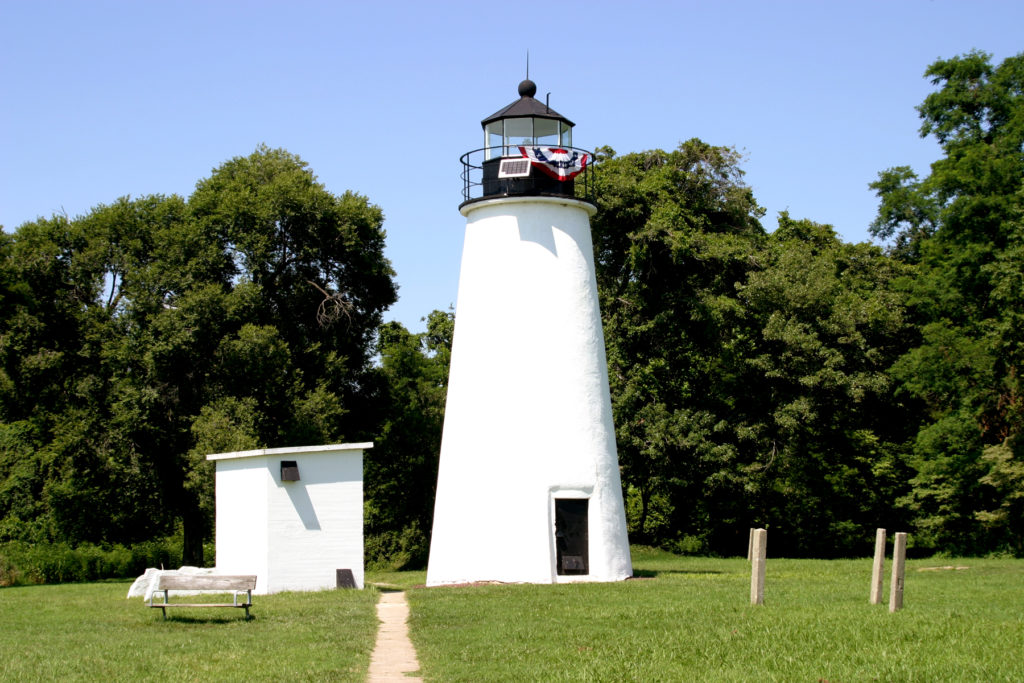
My first destination will be Elk Neck State Park at the northern tip of the Bay. It’s an 85-mile drive from my home in Annapolis, which should take about an hour and 45 minutes if I run up I-95 to North East, Maryland, and then south to where the Elk River meets the Bay. The park comprises 2,370 acres of marshlands, forest, white clay cliffs and sandy shorelines.
Elk Neck State Park is divided into four areas. The Turkey Point Lighthouse Area is located at the southern tip of the Elk Neck Peninsula and features a trail to the historic Turkey Point Light Station. The walk to the old lighthouse is delightful. When we were there last, my wife and I strolled through a meadow and along a path that leads through a natural arbor. There, we found ourselves surrounded by a whole flock of neon-blue indigo buntings. The view of the Bay from the bluff at the point is stunning.
The North East Beach Area is a popular day-use area located in the western portion of the park where you’ll find a swimming area, canoe/kayak launch, picnic shelters, picnic tables and grills. The Bay water this far north is fairly fresh, so you don’t have to worry about swimming with sea nettles. There’s a boat ramp and fishing pier at the Rogues Harbor Boat Launch Facility. The Elk River Camping Area on the eastern shore of the peninsula provides more than 250 campsites and 16 cabins, a park store, playground and a nature center. We’ve camped there before, and it’s fun to watch the big freighters slip by up close on their way to the Chesapeake and Delaware Canal.
ELK NECK STATE PARK, 4395 Turkey Point Rd., North East, MD 21901
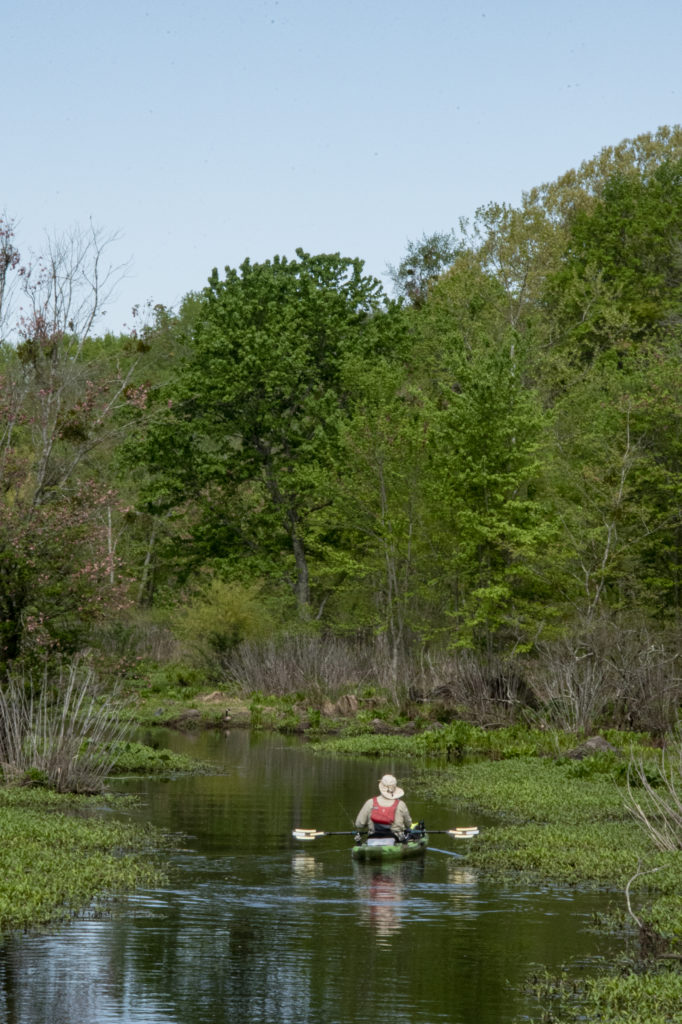
The next stop would be Martinak State Park, 72 miles south, which should take about another hour and 45 minutes to drive. It lies just south of Denton between the banks of the Choptank River and Watts Creek. It’s one of those hidden gems you drive by a thousand times on your way down to the ocean. It’s one of Maryland’s smaller parks at just about 125 acres of pine and hardwood forest, fields and marshes, but there’s a lot to explore.
It’s named for George Martinak, who donated the property he bought in 1928 for a fishing and hunting camp. The log cabin he built on a bluff overlooking the river has been restored and moved to a more central location in the park, which boasts hiking trails, several enticing playgrounds, picnic pavilions, a nature center and an amphitheater overlooking the creek.
The campsites are scattered around the loblolly forest, providing a serene atmosphere. Pets are allowed in all areas of the park except the pavilions and cabins. There’s a boat ramp where it would be easy to launch a small boat to explore the creek as it winds around to meet the river.
MARTINAK STATE PARK, 137 Deep Shore Rd (two miles east of Denton, off Rte. 404), Denton, MD 21629
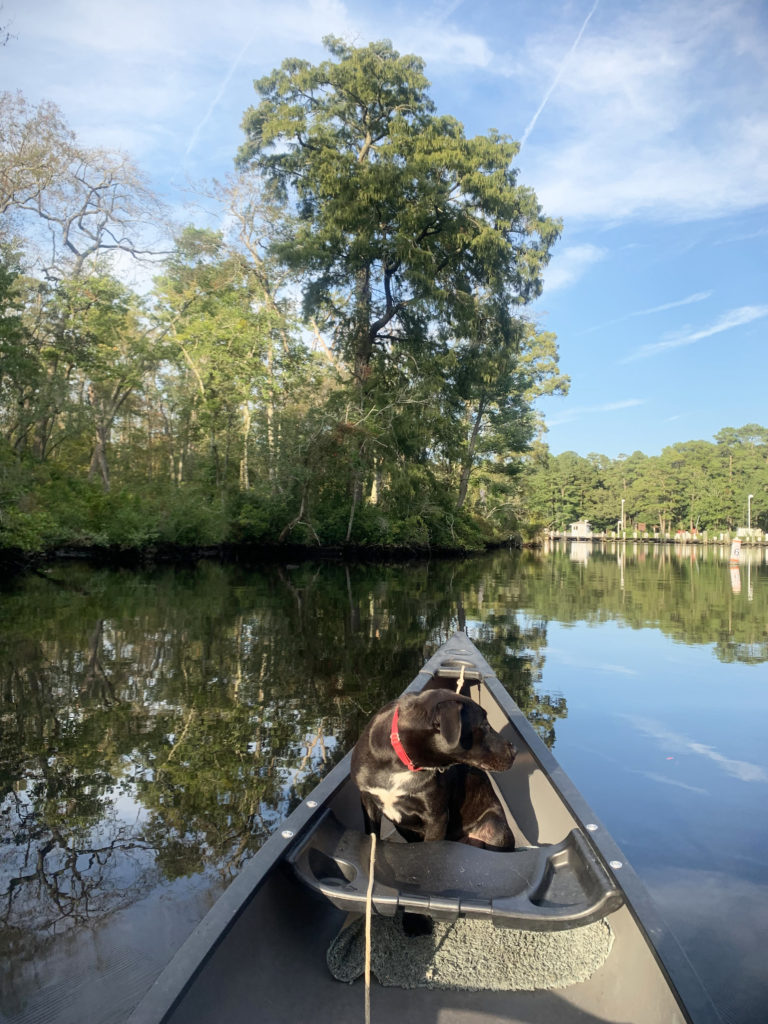
Next comes Pocomoke River State Park, 73 miles farther south along the Delmarva Peninsula. That should take about 90 minutes to drive. When you’re engaged in this sort of land cruise, you can schedule your travel for the time span between check-out time at one park and check-in time at the next. That way, you can plan stops for lunch, sight-seeing, dog walks and restocking provisions.
The park is surrounded by 18,000 acres of the Pocomoke State Forest. The park is split into two sections, one on each side of the river. The Milburn Landing area lies on one side, north of Pocomoke City. The Shad Landing area is on the other side, just south of the charming little town of Snow Hill.
Shad Landing boasts a boat ramp and a marina with transient slips. There’s a swimming pool, a ballfield, large picnic pavilions and a multitude of drive-in sites for tent camping or RV-ing. All the campsite loops are set in a mature loblolly pine forest, and while they are all quite pleasant, the main attraction is the river itself.
You can launch from the park to explore a couple of different water trails, but on our last visit, we drove to Snow Hill and hired an aluminum jon boat with a small outboard from the Pocomoke River Canoe Company. It’s located in an ancient red wooden warehouse by the drawbridge. The trip up the river was nothing short of ecstatic. We saw bald eagles, an enormous blue heron and a bevy of belted kingfishers. Bend after bend, the river became narrower until we were idling through a primordial swamp. We kept going until we started bumping into submerged logs and cypress knees, then spun around and drifted down with the ebbing tide.
POCOMOKE RIVER STATE PARK
Shad Landing Area, 3461 Worcester Highway, Snow Hill, MD 21863
Milburn Landing Area, 3036 Nassawango Road, Pocomoke City, MD 21851
Next up will be Kiptopeke, a Virginia state park located at the very southern tip of the Eastern Shore, 79 miles south of Pocomoke State Park. In this itinerary, we reluctantly pass by Janes Island State Park near Crisfield, Maryland, which we’ll visit next time. Kiptopeke is along the Atlantic flyway, so it’s a great place to see migratory birds from season to season.
The park has cabins, lodges, RV and tent camping, yurts and a bunkhouse. There’s a boat ramp, lighted fishing pier, picnic areas, five miles of hiking and biking trails, playground, beach bathhouse and swimming beach. The beach is broad, beautiful and ideal for those iconic long walks. You can hardly see across to the Western Shore from there. On our trip there last year, we visited the nearby town of Cape Charles and enjoyed browsing through the art galleries and shops and had a wonderful lunch at a seafood restaurant overlooking the inlet.
KIPTOPEKE STATE PARK, 3540 Kiptopeke Dr., Cape Charles, VA 23310
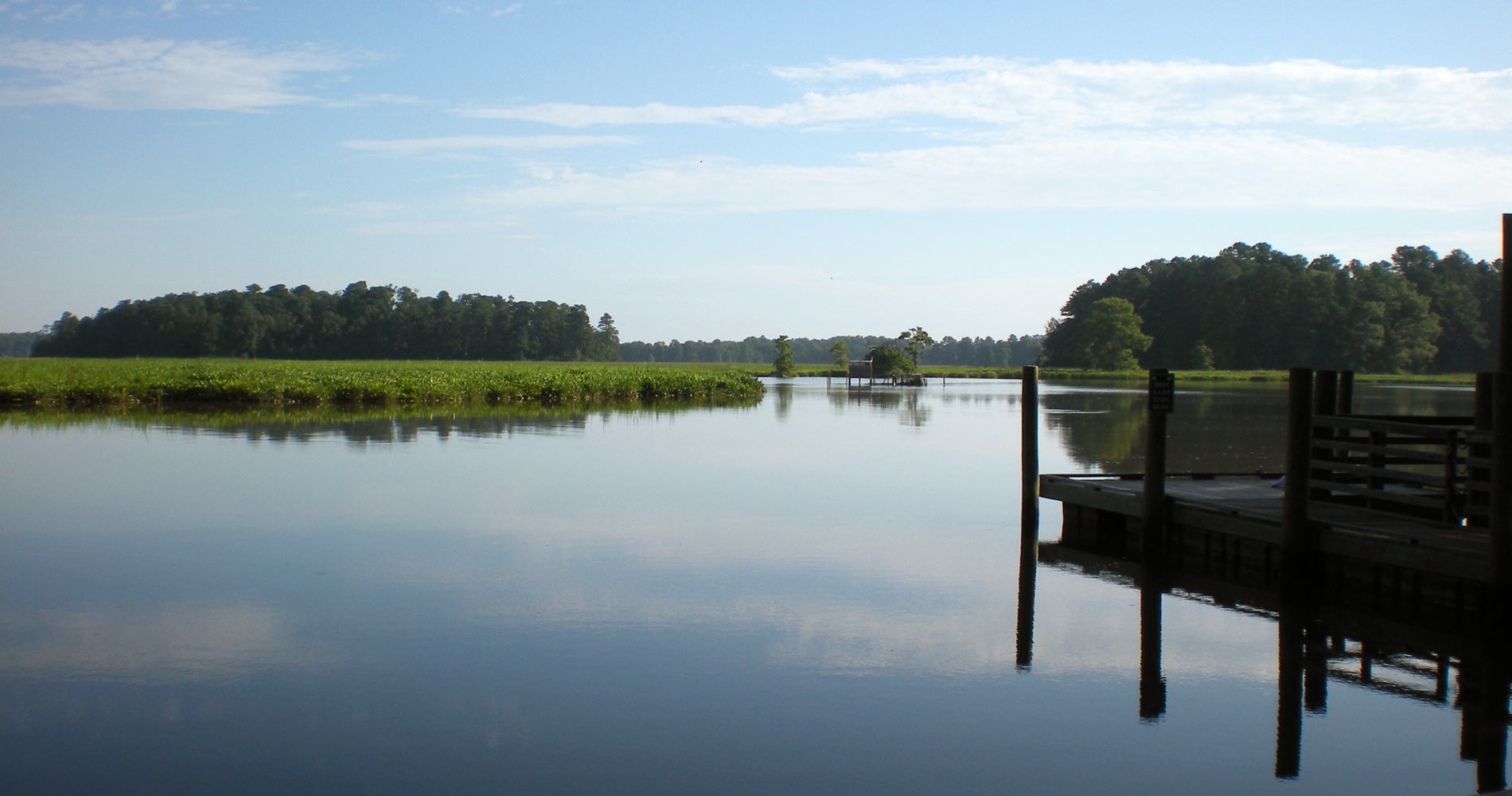
Kiptopeke is three miles from the northern terminus of the Chesapeake Bay Bridge-Tunnel, and I’m confident that my light little trailer will make it across—all 19 miles of it—with ease. Our destination will be Chickahominy Riverfront Park, 80 miles away. This will probably take two hours to cover, considering traffic driving through Norfolk and Newport News. It will be a new experience for us, so I’m eager to explore. This is a James City County park featuring more than 80 campsites, some of which have scenic views of Gordon Creek. There are basic tent sites as well as full-hookup sites for RVs. There are no cabins available.
The park offers a 290-foot lighted fishing pier that’s available for use 24 hours a day and a catch-and-release pond. A Virginia freshwater license is required for all fishing in the park for anyone over the age of 16. The park also features a boat ramp for a modest fee. Canoes and kayaks are available for rent all year. Chickahominy Riverfront Park is close to both Jamestown and Williamsburg and all the historic attractions.
CHICKAHOMINY RIVERFRONT PARK, 1350 John Tyler Highway, Williamsburg, VA 23185
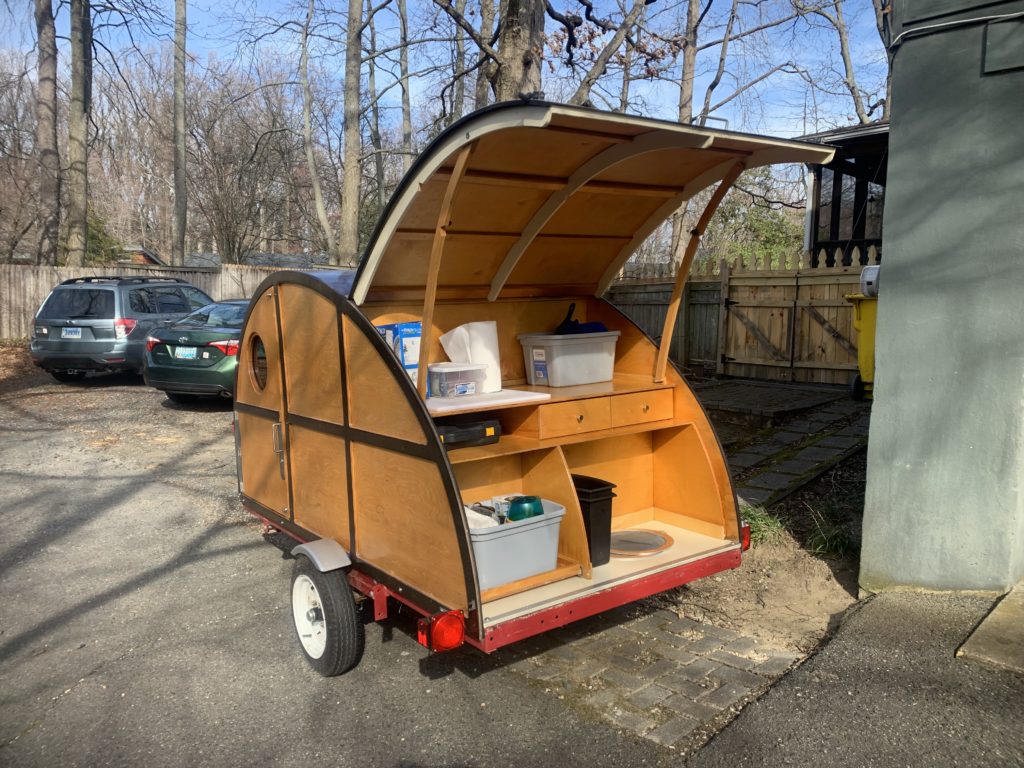
Next stop is the Cross Rip Campground, a privately owned site in Deltaville, Virginia. The 60-mile drive north ought to take about 90 minutes. It’s located on the Chesapeake Bay between the Rappahannock and Piankatank rivers. I’ve never been, but friends tell me it’s a fun, laid-back place with plenty of beautiful scenery and lots of character. There’s a private sandy beach where you can launch a boat, a fishing pier and a fresh-water pond. Another of the many amenities is a large field for dogs to run off-leash. Plus, I can visit my friends at the Deltaville Maritime Museum while I’m there.
CROSS RIP CAMPGROUND, 503 Cross Rip Rd., Deltaville, VA 23043
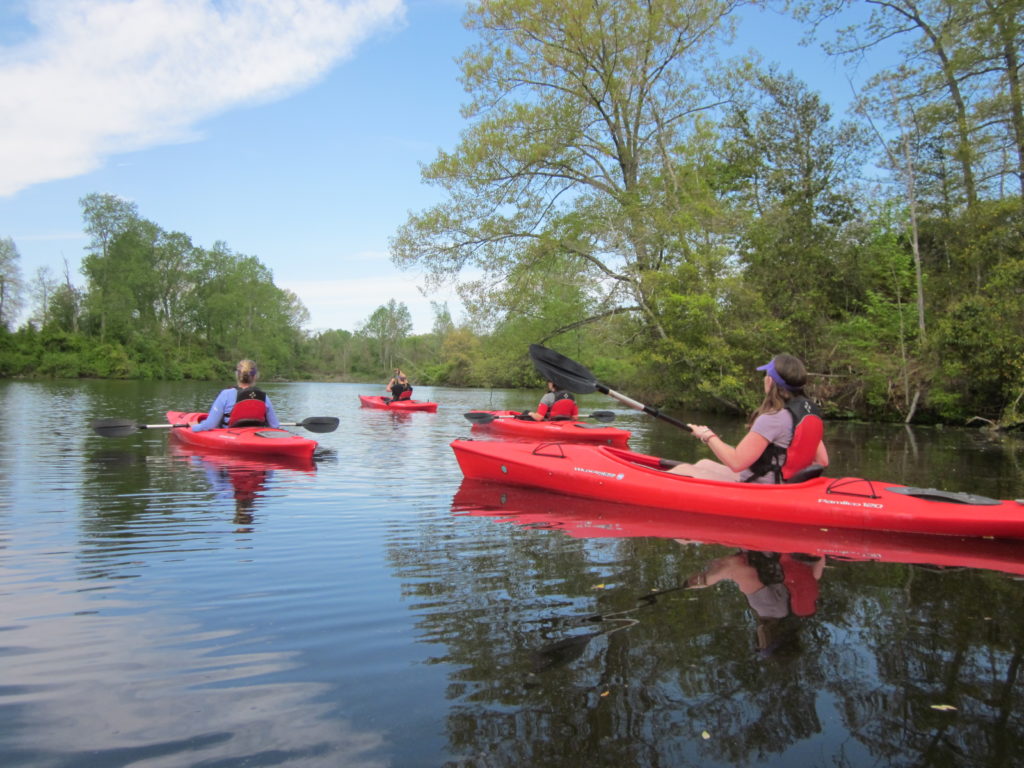
Then it’s a 72-mile drive to Westmoreland State Park, which should take about 90 minutes. The park stretches along about a mile and a half of the Potomac River shore on the Northern Neck of Virginia. The park opened in 1936 and several cabins and other structures built by the Civilian Conservation Corps are still in use, which explains its listing on the National Register of Historic Places. Fossil hunters search the beach at the foot of the Horsehead Cliffs for sharks’ teeth. The park offers hiking on six miles of trails, camping, cabins, fishing, boating and swimming. It’s close to George Washington’s birthplace and Stratford Hall, the birthplace of Robert E. Lee. Offshore breakwaters are great for fishing. Birding enthusiasts find the park an excellent site for spotting American bald eagles, ospreys, kingfishers, great blue herons, common terns, green herons and gulls, as well as wintering waterfowl.
WESTMORELAND STATE PARK, 145 Cliff Road, Montross, VA 22520
Our whirlwind, 600-mile circumnavigation of the Chesapeake Bay by land ends with the last leg, a 90-mile drive back to Annapolis. Now the only question remains: who do I take along? My wife or my dog?
CBM’s editor Jefferson Holland writes about the Chesapeake Bay in poetry and prose. He lives in Annapolis with his wife, Louise White, their rescue retriever, Millie, and two cantankerous cats.

